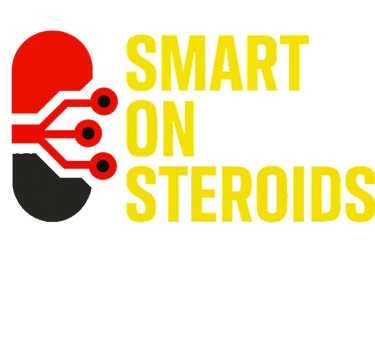AI AUTOMATION — Co‑pilot PHASE
Human on exceptions, KB updates, drift detection, SLAs, RBAC & data residency
8/19/20253 min read


Executive summary
Co‑pilot is the stabilization phase between HITL and Full Autonomy. The system executes the happy path end‑to‑end while humans focus on exceptions, policy changes and continuous KB updates. We harden drift detection, formalise SLAs, enforce RBAC and respect data‑residency constraints. Graduation to Full Auto only happens when quality, cost and reliability stay within SLOs for multiple consecutive weeks.
1) Objectives & scope
• Keep humans on exceptions and policy-sensitive actions; automate the happy path.
• Maintain living knowledge (KB) so prompts, tools and policies stay current.
• Detect model/data drift early and revert routes safely when needed.
• Operate under explicit SLAs/SLOs with RBAC and data‑residency controls.
2) Operating model — co‑pilot pattern
• Agents execute; humans handle exceptions and approve policy changes.
• Continuous KB updates: new facts, templates, reference decisions and red‑flags.
• Evaluators and trace data provide real‑time quality/latency/cost visibility.
• Canary routes for changes; instant rollback via feature flags.
3) Exceptions — classes & handling
Exception class
Trigger
Routing
Owner
Resolution target
Quality risk
Evaluator < 0.80 or policy watchlist
Exception queue
Senior operator
Same business day
Ambiguity
Low confidence / missing context
Request clarification
Operator
Within 4 business hours
Safety/compliance
PII/PHI/regulatory flag
Dual control + redaction
Security + Operator
Same day
Cost anomaly
>$ cost/item or route drift
Pause route; switch to cheaper model
Ops lead
1 hour
Customer impact
External send to customer
Approval required
Supervisor
2 hours
4) Knowledge base (KB) updates — living system
• Sources: operator rationales, new policies, product changes, resolved exceptions and post‑mortems.
• Mechanics: KB as code (versioned), PR reviews, auto‑deploy to retrieval index; stale entries flagged.
• Validation: evaluator deltas before/after KB update; rollback if regression exceeds threshold.
5) Drift detection — don’t trust, verify
Drift type
Signal
Detector
Mitigation
Data drift
Input distribution shift
Embedding distance / KS‑tests
Refresh KB; retrain; tighten prompts
Model drift
Quality/latency degradation
Evaluator trends; p95 latency
Reroute to stable model; rollback
Cost drift
Tokens/item ↑, cache ↓
Telemetry + anomaly rules
Compress prompts; adjust cache; cap tokens
Policy drift
More violations
Red‑team & policy evaluators
Revert policy; add tests; training
6) SLAs & SLOs — what we promise
Metric
SLO (target)
SLA (guarantee)
Notes
Quality (evaluator median)
≥ 0.85
≥ 0.80
Task‑specific evaluators; sample ≥5%
Latency (p95)
≤ 3.0s
≤ 3.5s
Per step, at business hours
Exception rate
≤ 15%
≤ 20%
Eligible workflows only
Cost per item
−15–25% vs baseline
Within budget cap
Telemetry per route
Uptime (workflow)
≥ 99.5%
≥ 99.0%
Excludes planned maintenance
7) RBAC & data residency — access by design
• RBAC: least privilege roles (Reader, Operator, Supervisor, Engineer, Security, Finance).
• Approvals: dual control for irreversible/external actions.
• Data residency: deploy in requested region/VPC; pin storage and backups; geo‑fencing on logs.
• PII handling: masking/redaction; purpose limitation; retention policy; audit access.
8) Roles & RACI
Role
Responsibilities
R
A
C
I
Operator
Resolve exceptions; annotate KB gaps
R
C
I
Supervisor
Approvals; escalations; coaching
A
C
I
MLE/Engineer
Routes; evaluators; detectors; rollbacks
R
C
I
Security/Legal
Policy updates; audits; DPA
A
R
I
Ops Lead
SLAs/SLOs; staffing; incidents
R
A
C
I
Finance
Budget caps; anomaly reviews
A
C
I
9) Runbooks — day/week/month
Daily: review exceptions; sample 5% outputs; check evaluator/latency/cost dashboards; triage alerts.
Weekly: KB grooming; retrain window (if flagged); threshold tuning; policy review; change log.
Monthly: DR drill; audit sample; budget rebase; red‑team rotation; data‑residency verification.
10) KPIs — graduation gates toward Full Auto
KPI
Definition
Target (2 consecutive weeks)
Notes
Exception rate
% items needing review
≤ 12–15%
Eligible scope
First‑pass yield
% correct w/o edits
≥ 90–92%
Random sample ≥5%
Evaluator median
Task quality
≥ 0.86
Stable IQR
Cost per item
All‑in
−20% vs baseline
Within cap, no anomalies
MTTR incidents
Mean time to recovery
< 2 hours
Sev2 and below
11) Tooling & integration
• Observability: tracing, metrics and logs wired to dashboards; alerting to Slack/Teams.
• KB as code: versioned in Git; CI pushes to retrieval indexes; review required.
• CI/CD: tests in pipeline; canary routes; feature flags; rollback in seconds.
• Optional: Kubernetes (K8s) deployment for autoscaling and isolation when required.
12) Graduation to 04 — Full Autonomy
Requirements: meet KPI targets for 2–4 consecutive weeks; no Sev1 incidents; budget adherence for 3 weeks; KB hygiene score ≥ 90%; completed operator training on new policies.
Documentation: updated runbooks, change logs, and audit samples attached to the Go/No‑Go record.
13) Risks & mitigations
• Stale KB → weekly grooming; ownership per domain; auto‑flags on low hit rates.
• Silent drift → detectors with alerts; freeze promotion on signal; roll back routes.
• Approval fatigue → smarter thresholds; batch approvals; rotating reviewers.
• Privacy gaps → periodic audits; synthetic data for labs; strict residency checks.
14) FAQ
Q: How is Co‑pilot different from HITL?
A: HITL requires routine approvals; Co‑pilot automates the happy path while humans manage exceptions, policies and KB upkeep.
Q: Do we need Kubernetes for Co‑pilot?
A: Not required; we support serverless and VM deployments. K8s is optional for scale/isolation.
Q: How often do we update the KB?
A: Minimum weekly, plus on‑event after policy/product changes.
Book a 30’ Co‑pilot readiness review
Email: contact@smartonsteroids.com — we’ll review your HITL metrics, tune thresholds and plan Co‑pilot rollout.
© 2025 Smart On Steroids — AI Automation Studio → Platform

